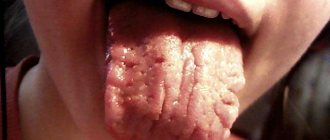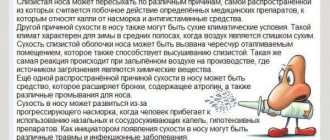Content:
Lip frenuloplasty is a corrective operation to trim the fold that attaches the lip to the jaw. Lip frenuloplasty was first performed in the middle of the last century. But now this procedure can be performed using a laser. It is laser lip frenuloplasty that will be discussed later in this article.
If there is an incorrect structure of the frenulum, a person begins to experience problems from this even in childhood, and over time they gradually intensify. The development of malocclusion, predisposition to periodontal disease, problems with articulation - this is not all that a person with an irregular lip frenulum may encounter.
Laser lip frenuloplasty can not only make your smile more beautiful, but also correct various problems with speech or with the installation of orthopedic structures, which are often observed in patients with improperly developed labial frenulum.
Laser excision of the labial frenulum is performed without complex special preparation, and the entire operation takes place quite quickly, and the patient does not experience any significant inconvenience. Laser surgery for lip frenuloplasty is a modern and excellent method of correcting it.
Diagnostics
How to identify the problem yourself
The correct length of a baby's frenulum is considered to be 8 mm and above. To take the measurement, you should pull back the lower lip so that the baby opens his mouth. If the tongue is attached at the very edge and does not reach the lip, then most likely there is a shortening of the frenulum under the tongue.
For older people, a characteristic syndrome is identified when problems are detected with pronouncing individual letters (usually a lisp) and seeking help from a speech therapist.
How does a doctor diagnose?
Diagnosis of pathology is carried out by collecting anamnesis and visual examination of the patient
There are many child health specialists who can diagnose frenulum shortening:
- pediatrician;
- surgeon;
- neonatologist;
- dentist;
- orthodontist;
- ENT;
- speech therapist.
Diagnosis of pathology is carried out by collecting anamnesis and visual examination of the patient. The Haselbaker test, which takes into account the size of the frenulum and the mobility of the tongue, can help determine the disease.
In particular, according to the doctor’s method, it is considered normal if the bridge is longer than 0.8 cm, and the baby can easily reach his lips with his tongue and can lift it to the sky.
Indications for surgery
You should know that not every pathology of the labial frenulum requires mandatory surgery. The advisability of excision of the frenulum is usually determined by the orthodontist or periodontist during an external examination of the patient.
The operation is indicated in the following cases: - For orthodontic treatment. Pathology of the frenulum can prevent the normal installation of dentures (plates and braces). - Presence of a diastema (gap between teeth). The gap between your front teeth can widen and lead to gum disease such as periodontitis. — Periodontal diseases. Due to the incorrect structure of the frenulum, food can accumulate under the lip, which gradually rots, thereby creating favorable conditions for the development of dental diseases. - Problems with speech. Severe pathology can sometimes cause impaired diction.
Signs of pathology
A congenital defect of the frenulum is detected by a number of signs. They are visible to the naked eye and are diagnosed by a doctor during the initial examination of the newborn.
The main one is the unusual shape of the tongue with the tip slightly pulled down. It looks a bit like a small heart.
There are secondary factors that manifest themselves during feeding in the baby and the mother:
- The baby smacks his lips and releases the nipple, which increases the duration of the feeding session and, in general, it becomes quite difficult to feed the baby.
- Without eating, the baby gains weight worse.
- Due to poor nutrition, colic occurs more often in a child. He regurgitates food.
- The pathology does not allow the newborn to hold the mother's breast correctly, which is why cracks and bite marks remain on the nipple, and less milk is produced.
If these symptoms appear, you should take a close look at the child.
Contraindications for surgery
There are practically no contraindications for laser excision of the labial frenulum compared to other operations. The procedure can be performed even on children as young as 6 years old.
Parents should know that laser lip frenuloplasty is the least traumatic and uncomplicated operation that can solve many problems that a child may encounter in adulthood.
Despite this, there are a small number of contraindications, including: - The patient has cancer; — Severe mental and neurological diseases; — Serious defects in the structure of the oral cavity; — Blood diseases; — Infectious diseases in the acute stage; — Advanced caries; - Osteomelit.
As you can see, contraindications are quite serious diseases that are rare. But it should be remembered that a referral for this operation, like any other, can only be given by a qualified dentist after an in-person consultation with the patient.
Short frenulum of the tongue
The length of the hyoid frenulum is different for all people, but in some people it develops incorrectly, as a result of which the mobility of the tongue is limited. If the frenulum is attached too close or is located at the very tip of the tongue, it must be incised. Abnormalities of the frenulum are often detected immediately after birth - the child cannot latch onto the breast, sucks poorly and quickly refuses feeding. These signs, as a rule, indicate a defect in the oral cavity - a short frenulum. The procedure for treating a short frenulum is practically painless; within a day the patient forgets about the intervention.
A short frenulum is not always diagnosed in newborns; signs of a short frenulum can also appear at an older age, when the child is 5–6 years old. If a child has difficulties with sound pronunciation and cannot pronounce “r,” then this is a reason to check the frenulum. It is believed that at this age the length of the child's frenulum should be about 8 mm.
Laser plastic surgery of the lip frenulum
There are several methods of performing lip frenuloplasty surgery. In modern dentistry, the following methods are used: frenotomy, frenectomy, frenuloplasty and laser plastic surgery of the labial frenulum. Among all these techniques, the most modern, safe and effective is, of course, performing the operation using special laser equipment.
Among the advantages are the following: - Almost complete absence of pain; - No bleeding; — The whole operation takes just a few minutes; — There are no significant restrictions before and after the operation; — The operation is performed on an outpatient basis, there is no need for hospitalization; — Sterility of the procedure; — Short recovery period.
No special preparation is required before the operation. Laser lip frenuloplasty begins with cleaning the oral cavity; professional teeth cleaning procedures can be performed. This is done to prevent infection, if any.
Next, a special gel is applied to the operated area, which acts as a local anesthetic, and the operation itself begins. The doctor, using special equipment, aims a laser at the lip frenulum, with the help of which the excision occurs. The impact of the laser not only dissolves the tissue, but also simultaneously achieves the effect of sterilization and cauterization of blood. Unlike other techniques, with laser frenuloplasty there is almost no blood or complications after surgery.
The postoperative period also does not require any special actions and does not introduce great restrictions into the normal rhythm of a person’s life.
It is recommended after surgery: - Carefully monitor oral hygiene; — Do not eat hot, spicy, sour or solid foods for several days;
About a week after the operation, you will need to visit the clinic for an examination, where the doctor will make sure that the operation was successful. The doctor will also recommend and help you learn special exercises for the mouth, aimed at strengthening the facial and chewing muscles.
Degrees of anomaly
In pediatrics, there are several degrees of pathology of the frenulum under the baby’s tongue:
| Degree | Symptoms |
| I | Thinning of the frenulum up to a translucent state and its shortening, which prevents the normal mobility of the tongue. |
| II | A frenulum with a defect is attached close to the end of the tongue, causing it to resemble a heart when raised. |
| III | The short, thickened section of the frenulum is also located close to the edge, which is why the tongue bends in a slide when lifted. |
| IV | A massive cord penetrates the muscular structure of the tongue, which usually occurs in parallel with a cleft lip or palate. |
| V | The dense area of the frenulum almost does not appear against the background of the tongue and fuses with the muscles, severely limiting the latter’s ability to move (the so-called ingrained tongue) |
Thus, the danger of pathology increases depending on the degree of limitation of tongue mobility.
Lip frenuloplasty in Krasnodar
Laser lip frenuloplasty is a safe and effective method of frenulum correction, which is chosen by dentists in modern dental clinics. Our experts also recommend using laser techniques. This method allows you to achieve results in the shortest possible time.
In the city of Krasnodar, you can perform this procedure in our dental clinic “Symmetry”. The clinic has all the necessary modern, high-quality dental equipment. And our dentists have extensive experience and high qualifications, confirmed by many specialized diplomas and positive reviews from our patients.
Short frenulum of the upper lip
Normally, the frenulum of the upper lip should be located at a distance of 5–8 mm from the neck of the upper incisors and extend beyond the lip. In case of deviations from the norm (if the frenulum is lower or attached behind the teeth), the frenulum must be trimmed, since a short frenulum of the upper lip can lead to many negative consequences, such as:
- difficulties with breastfeeding;
- bite deformation;
- formation of a gap between the front incisors;
- speech defects.
A short frenulum can cause the development of inflammatory processes in the oral cavity, since its excessive tension can injure tissues and provoke the development of gingivitis and periodontitis. The frenulum can change its attachment location as the child’s jaws develop, therefore, before permanent teeth appear, trimming the short frenulum of the upper lip is not a mandatory procedure.










